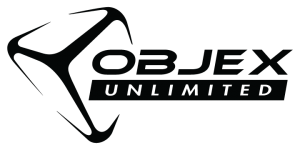
Little is more important for college-bound high school seniors than getting into the university of their choice. Technically minded students attending Ontario High School in Mansfield, Ohio, USA, have a distinct advantage in this quest.
Like most public schools, Ontario High strives to give students access to the highest technologies, but funding is always a challenge. Many schools in this position just make do with what they have. They rely on teachers to tell students about emerging technologies that are changing business and industry rather than let them experience it.
This just isn’t good enough for Ontario High computer drafting students. For a proper education, the school believes it’s essential to recreate an educational environment that faithfully simulates the real-world workplace, where designs undergo numerous iterations, become prototypes, and are further refined before ultimately becoming products you can hold in your hand. After overcoming some financial obstacles, that’s exactly what the school has created, giving students priceless experience for the workforce and higher education.
Challenge
Access to High Tech Equipment Essential to Design Training
Ontario High is no different than other cash strapped school districts except for the fact that computer drafting instructor Bruce Weirich and the business community found a creative way to overcome the financing obstacle for advanced technology.
In 2006, Weirich, a former high school football coach, attended a workshop in Columbus, OH, and discovered his former starting quarterback rapt by a “3D printer” in action. After a hearty reunion, Weirich immediately recognized 3D printing’s power to close that long-incomplete design-to-production circle, calling 3D CAD software and 3D printing a “match made in heaven.”
A 3D printer is an output device for 3D CAD data in the same way that a 2D printer is an output device for the words and pictures on your computer screen. The primary difference is that a 3D printer outputs three-dimensional models and prototypes in composite material. 3D printing is gaining ground as equipment follows the pattern of 2D printers: capabilities are increasing as prices fall.
Solution
Public-Private Partnership
Lacking a stockpile of cash for new technology, Weirich creatively sewed some budget money together with financing help from Jay Plastics, a nearby auto industry parts supplier. In return for the financial support, Weirich’s students print out prototypes for Jay Plastics in support of its headlight parts contract for the Ford F150. In addition to bringing state-of-the-art prototyping technology to Weirich’s students, 3D printing has given them invaluable experience dealing with business and industry.
Results
Dynamic Learning Across Multiple Departments
Ontario High students can now take the 3D designs they’ve developed in their Rhino™ CAD software and hold the 3D physical prototypes in their hands a couple of short hours later. Both the students and Jay Plastics are maximizing the unique color potential of Spectrum Z™510 color 3D printer , the only multicolor 3D printers. Jay’s engineers are using ZEdit™ software to mark up physical models with color and notes for instance, to flag a part for structural analysis or show where the fastener attaches.
Access to 3D printing is giving Ontario students experience in the entire product design cycle, from concept to production, without leaving the classroom. “Students get an idea, sketch it out, develop it in Rhino, animate it, print it, and then hold it in their hands,” says Weirich. “When they hold it in their hands, they’re closing the loop, which really brings the value of the exercise home. Until then, it’s all conceptual, virtual and 2D. Completing the circle is important. It turns kids on.”
The 3D printer in Weirich’s classroom is pumping out models “twenty-four seven” he says. Students print mechanical designs, architectural models and art objects, including ducks, masks, cars, Big Ben, Mount Rushmore, the Lincoln Memorial and a sleek spaceship straight out of Star Wars. All of these are in bold color, which closes the loop on another level: students don’t have to imagine their monochrome parts as colored, or repaint them offline. They come straight out of the printer in high-fidelity 24-bit colors.
No 3D printer is faster than the Spectrum Z510, a critical capability for schools, especially when it’s time to print class projects en masse. A class of 25
students can print models, all unique, in a single build. The two-hour turnaround would make many manufacturing companies envious.
Weirich’s design students are just one user group. Ontario High School’s art department is using the printer to produce computer-designed sculptures, and industrial arts classes are using the printer to prototype furniture in miniature. Middle school students are just beginning to learn design with Rhino software, and the 3D printer will close the loop for those students as well, says Weirich.
Students’ 3D printing work has gained widespread notice. Once the plans for the Ontario district’s bus garage renovations and additions were approved, Weirich’s classes took the design, made an architectural color 3D model of the site plans, added color 3D models of buses, parked them in garage bays, and transported these models to public meetings. This enabled the public to better visualize and understand the plan. “Our models are answering questions that a lot of people in the community may have, and they are easer to see compared to trying to read a blueprint,” says Weirich.
The 3D printer is part of a well-equipped, comprehensive technology curriculum that Weirich says gives his students a leg up when they apply for admission and scholarships, and when they begin their college classes.
“Ontario High School design students are well-versed in areas of study that colleges and universities are just beginning to explore,” Weirich says. “Students are going to college and finding it very very easy to develop their skills at that level because of the advanced foundation they received here. Likewise, I think colleges and universities who visit us are learning a little about the possibilities of college prep in public education,” Weirich says. “And when students show up at interviews with colorful models to pass around the table, that makes a big impact on whether they’re admitted or hired.”
Weirich expects 3D printing to expand throughout the district, and he’s looking forward to expanding students’ technology horizons with 3D scanning. Then students could learn to scan objects, capture the design on their PCs, develop them in Rhino and print the reverse-engineered models. Says Weirich, “That would be yet another way to close the loop and provide the educational advantages our students and all students deserve.”
http://www.3dsystems.com/sites/www.3dsystems.com/files/13_CaseStudy-OntarioHS-FINAL.pdf



